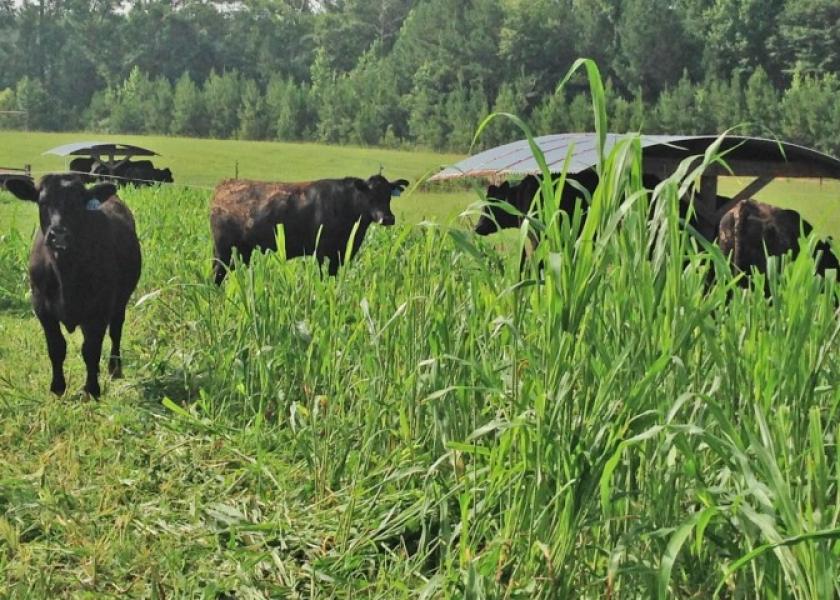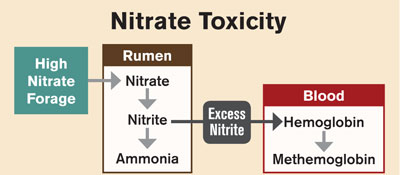Know Nitrate Toxicity

Cattle are built to graze, but irregular weather can create forage complications that lead to deadly situations
A beef producer’s worst nightmare is walking out into a pasture or pen and seeing dead cattle.
Rarely will the cause be forage, but weird circumstances can arise says Michelle Arnold, University of Kentucky ruminant Extension veterinarian. “We don’t have a lot of problem with forages because cattle are made to graze.”
Nitrate poisoning is a possible risk for grazing cattle during and after drought, when plants are experiencing weather stress.
A variety of forages including rye, wheat, oats, Johnsongrass, sorghum, sorghum-Sudan hybrids, millet, corn stalks, turnips and kale can have high nitrates levels.
Cattle can handle certain amounts of nitrates, Arnold says. When eating forage with smaller doses of nitrates, the rumen converts nitrate to nitrite and then to ammonia, which will eventually be protein.
For nitrate toxicity to occur, there must be excess pooling of the nitrate in the plant. It starts in the roots and works its way up the stem.
The buildup of nitrates makes it difficult for the rumen to convert the nitrite. The excess nitrite combines with hemoglobin to form methemoglobin. Hemoglobin carries oxygen in the blood stream to body tissues, but methemoglobin doesn’t carry oxygen.
“Now you’ve got a situation where you don’t have any oxygen-carrying capacity in the blood,” Arnold adds.
Signs of nitrate poisoning are weak and wobbly cattle with mucous membranes that are muddy in color.
Arnold cautions that cattle suffering from nitrate toxicity can collapse and die quickly. “Any cows that do survive usually abort because the fetus didn’t get enough oxygen,” she adds.
Treatment is possible with methylene blue dye; however, there is a 180-day withholding period before the animals can enter the meat supply.
Greg Highfill with Oklahoma State University Extension also has some experience dealing with high nitrate levels in western Oklahoma, where grazing and haying forage sorghum is common.
“It is critical that beef producers know the nitrate level of the hay they are buying or baling to assure the health of their herd,” Highfill says.
If the forage test determines the pasture or stored forages are high in nitrates, there are options.
First, do not let pregnant cows have access to high nitrate forage. Instead, graze open replacement heifers or stocker cattle on the risky forage to eliminate the threat of calf abortion.
Diluting high nitrate forage is another alternative. Producers can feed hay from a low nitrate source first or mix the two forages. Feeding grain helps, too. “Increasing the total energy of the ration, so feeding some grain, can help them tolerate the higher nitrates,” Arnold says.
Gradually introducing them to high nitrate forages will give their rumen flora time to adapt.
A last resort may be a feed additive like Bova-Pro. The product’s active ingredient is Propionibacterium acidipropionici, a bacterial strain that reduces both nitrate and nitrite levels in the rumen.
“It is not a cure-all but can be an important management tool when feeding hay that is moderately high in nitrates,” Highfill says. “The product must be fed at least 10 days prior to high nitrate feed exposure to ensure the bacteria are well established in the rumen.”
 |
A build-up of nitrates in the rumen can lead to methemoglobin, a form of hemoglobin that lacks oxygen-carrying ability. |







